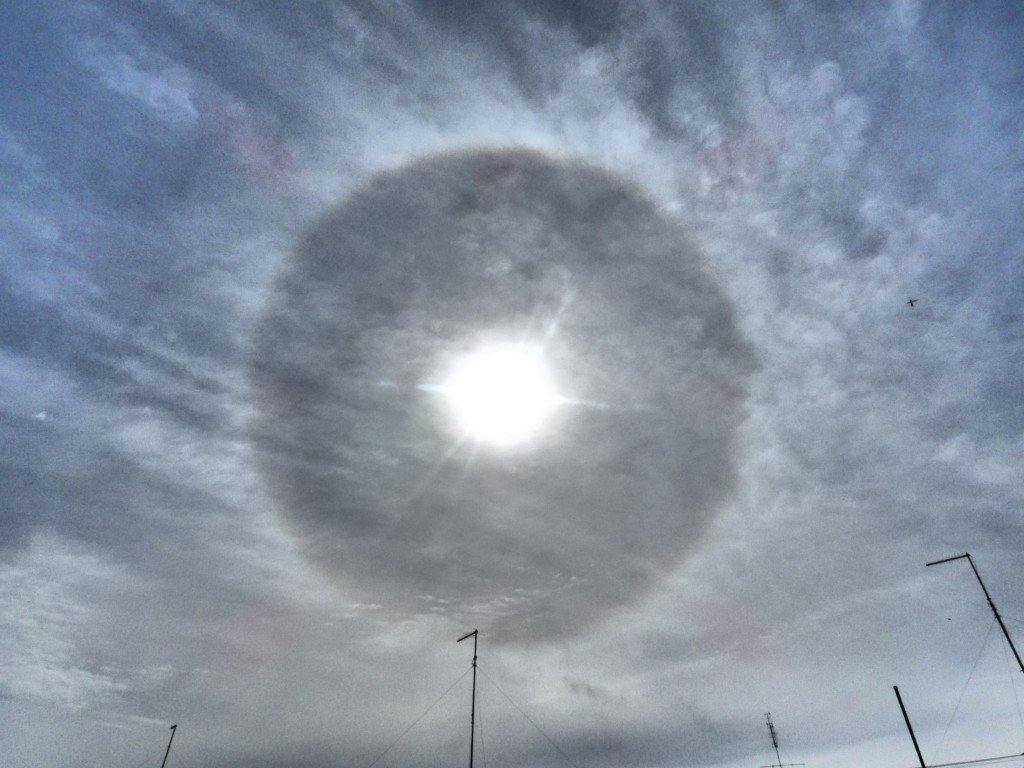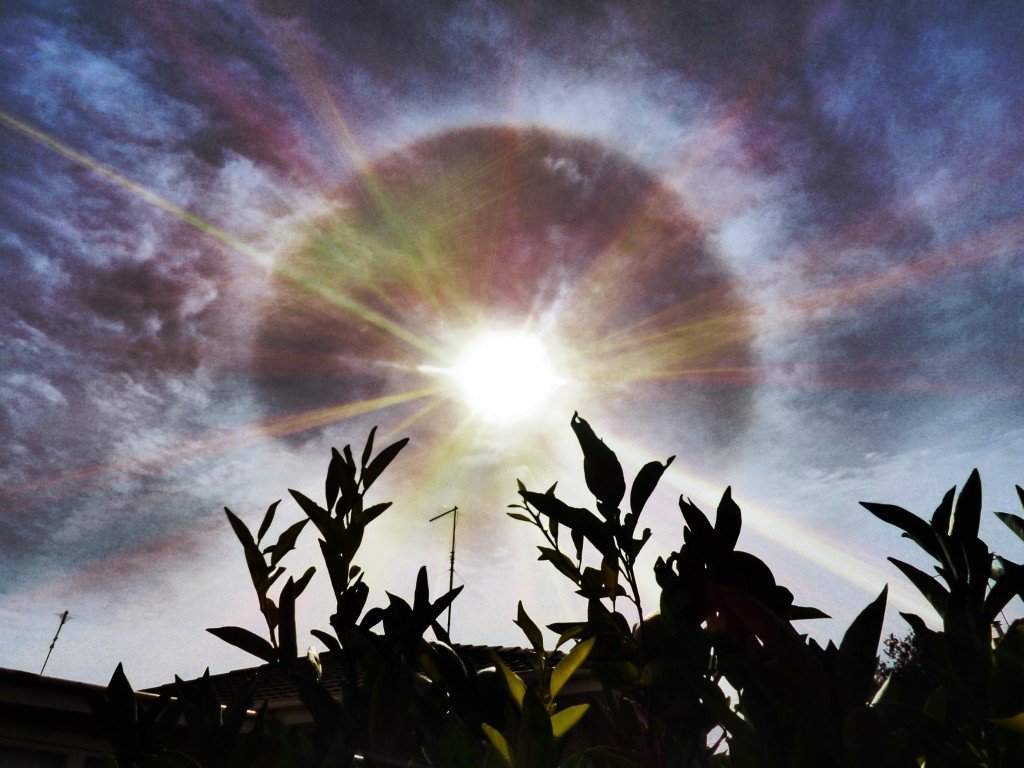
SOLAR HALO IN BALLARAT VICTORIA AUSTRALIA, APRIL 16, 2015
Noticed that within 24 hours there would be rain and what a great natural weather forecast. It did happen, it did rain and it rains for days in Ballarat after it, as I back posted this photo. The week after this Solar Halo was one of the wettest April for 80 years in NSW and Victoria while 100 years in South Australia according to Weatherzone Australia app on my mobile.
Don’t forget besides the Solar Halo, we just saw the Lunar Eclipse “Red Moon” in Australia, which has connections to natural disasters.

Solar Halo above our house roof top, Ballarat Victoria Australia
What is halo or 22° halo?
Wikipedia explains: ” A halo (from Greek ἅλως, halōs; also known as a nimbus, icebow or gloriole) is an optical phenomenon produced by light interacting with ice crystals suspended in the atmosphere, resulting in a variety of colored or white rings, arcs and spots in the sky. Many halos are near the Sun or Moon, but others occur elsewhere or even in the opposite part of the sky. Among the most well-known halo types are the circular halo (properly called the 22° halo), light pillars and sun dogs, but there are many more; some of them fairly common, others (extremely) rare. Atmospheric phenomena such as halos were used as part of weather lore as an empirical means of weather forecasting before meteorology was developed. They often do mean that rain is going to fall within the next 24 hours as the cirrostratus clouds that cause them can signify an approaching frontal system.” Source: http://en.wikipedia.org/wiki/Halo_%28optical_phenomenon%29

Leave a Reply